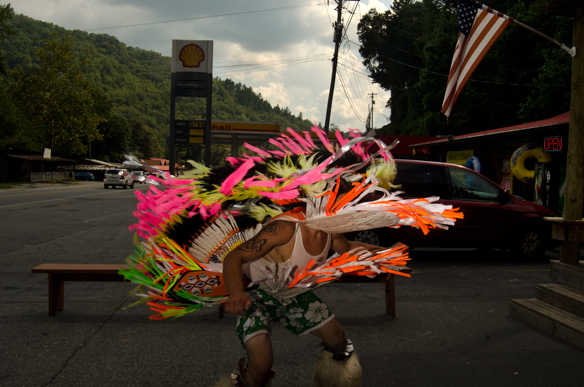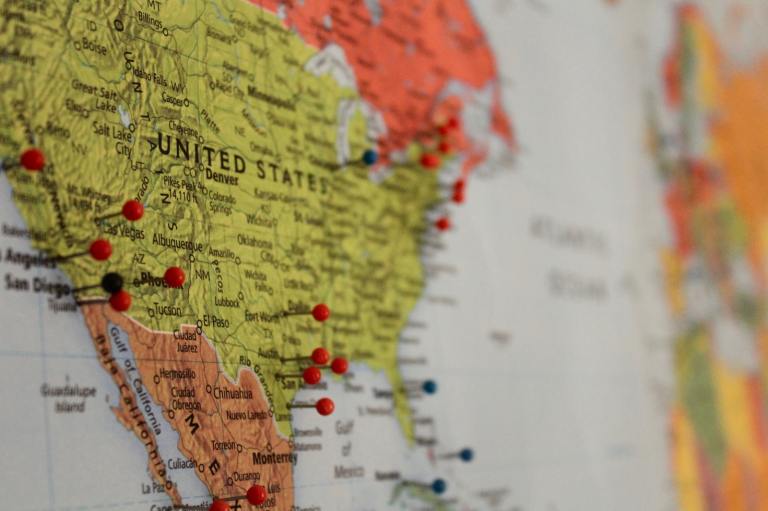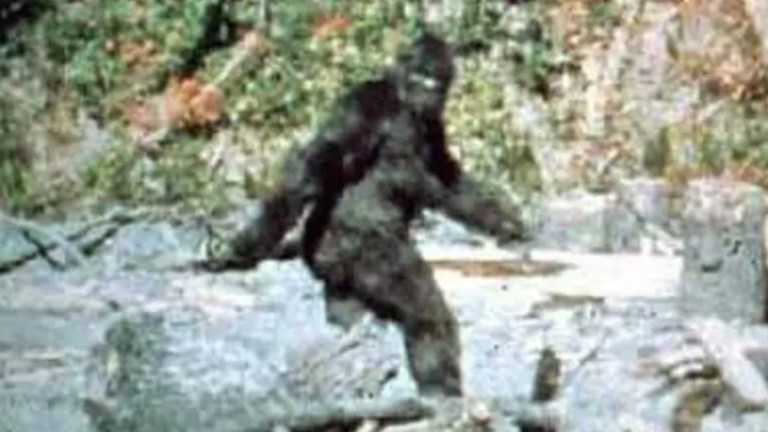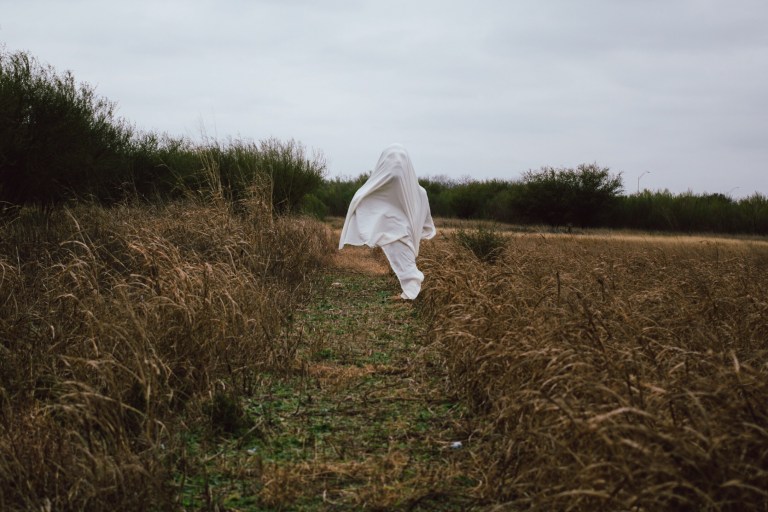Truth And Consequences In Appalachia


On April 24, 1964, while campaigning in support of his War on Poverty initiative, President Lyndon Johnson traveled to Inez, Kentucky to show the American public what life in rural Appalachia looked like. The goal of The Poverty Tours, as they were known, was to humanize a national poverty rate that had swelled to 19 percent. To do so the president urged the national media to focus its attention on the men, women, and children of Appalachia, which inspired a series of high-profile news stories — most famously, a 1964 CBS News Special Report called “Christmas in Appalachia” — that would eventually brand the region as the undisputed symbol of American poverty.
With the White House press corps in tow that day in April, Johnson walked on backcountry roads and met with families throughout Martin County in eastern Kentucky, where 70 percent of the residents at that time lived in poverty. That’s where the president met Tommy Fletcher, an unemployed coal miner, husband, and father of eight who had reportedly earned only $400 the previous year. In a well-known photograph shot that day by Walter Bennett, Fletcher, surrounded by his young sons on the front porch of their home, tells President Johnson of his struggles to support his family. After that meeting, Johnson made his grandiose pitch to the American public. “I have called for a national war on poverty,” he said to the assembled press. “Our objective: total victory.”
Today, nearly 50 years since Johnson declared his War on Poverty, the image of Appalachia as a place without hope still persists. Partly, it’s a matter of perception. In eastern Kentucky’s Martin County, for example, the poverty rate has actually dropped to 37 percent according to the US Census Bureau. Partly, however, it’s hard reality. High unemployment and low family incomes, for example, still plague places like New Straitsville, Ohio; Owsley County, Kentucky; and McDowell County, West Virginia, to name a few. While the living conditions in Appalachia — a region that stretches from the southern border of New York State down to northern Alabama, Mississippi, and Georgia — have changed since the days of President Johnson, the public’s view of the region has not.
For Kentucky-born photographer Stacy Kranitz, offering an honest depiction of a region dogged by stereotypes and misrepresentation for the last five decades has become an obsession. “I am very conscious of the fact that it is not my job to have a predetermined idea about what Appalachia is,” Kranitz says. “I also do not want to ignore the poverty and only showcase selectively positive things happening to offset these stereotypes.”
For the last five years Kranitz, who now lives in Los Angeles, has immersed herself in a long-range photo project documenting the people of Appalachia. Most recently she published From the Study on Post-Pubescent Manhood (Straylight), a book that chronicles the lives of a group of young people, predominantly men, who Kranitz befriended in southern Ohio at an 80-acre wooded compound known as Skatopia. The work is intended as an examination of violence as catharsis, and provides an unvarnished view of group dynamics in a particular subculture.
Over the last several weeks, I’ve corresponded with Kranitz by email, discussing the nature of her photographs, Appalachia’s legacy as the national face of American poverty, and the difficulty of creating new images in a region where mass-media stereotypes run deep.

Matthew Newton: In preparation for our conversation, I looked back at John Dominis’ “The Valley of Poverty,” his 1964 photo essay on life in Appalachia for Life magazine. What struck me most about what Dominis saw in 1964 were the nature and the depth of poverty. The people of Appalachia were already intimately familiar with poverty by the time LBJ sought to address the issue as part of his Great Society programs. What was your impression of the region’s history of poverty as you traveled through Appalachia nearly 50 years later?
Stacy Kranitz: When I was traveling through central Appalachia I found myself questioning my own understanding of what poverty is. I learned that there is no clear consensus among economists, policy makers, and social scientists about who and what dictates minimal levels of health, housing, food, and education necessary for contemporary life in America. I think it is important to note that originally the church regarded the poor to be of the highest moral status. But since the 14th century “poverty” as a label has been used to ostracize certain people in society. Social Darwinist thinkers in the late 18th century and early 19th century influenced attitudes towards poverty during the emergence of capitalism. These laws were not just for the poor but also for anyone who did not abide by the prevailing pattern of consumption. It was during this time that Christian missionaries first spoke of the Appalachian region as ignorant and impoverished, a perception that was realized during the economic transition that took place with the colonialist coal industries entry into the region at the end of the 19th century. The Appalachian people were denigrated so that they could be exploited specifically because they owned valuable land with natural resources.
The idea of a “culture of poverty” was introduced in the 1960s to imply that there is a certain lifestyle characteristic of the poor, which inhibits upward mobility. Does belonging to a group of people who have been poor for many generations place one in a subculture whose behaviors and attitudes perpetuate their poverty? More importantly, I think it is valuable for us to question how we arrive at the meaning of poverty using criteria of ideological difference between rural and urban populations. Maybe one population should not be in a position to categorize another. Our cultural assumptions come from the concept of self we are most familiar with. This must be acknowledged and factored into any type of categorization of the other. I believe that we should consider how poverty is manifested and given meaning in different types of societies before determining who is and isn’t poor.





Matthew Newton: I know that you’re particularly interested in the idea of how people are represented in photographs. This is how you encapsulated it when we first corresponded: “the troubled history of photographic representation in anthropology as well as the role of propaganda.” How, in your estimation, has poverty been misrepresented over the years?
Stacy Kranitz: I think there has been a unique and problematic trajectory for Appalachia. It is a place known as the poster child for poverty in America, and the frontier for the War on Poverty. The region was forced into such a pigeonhole because of its predominately white population. Politicians, in the early 1960s, were concerned that they would have a difficult time getting the greater public to support new policies to eradicate poverty in America if the face of poverty had a darker skin tone. News organizations then descended on Appalachia to put a white face to the War on Poverty. Journalists depicted Appalachia as an unseemly place to live. This pervasive image has haunted its people ever since. Those responsible for these media misrepresentations had the best of intentions, but ultimately they contributed to unfair stereotypes of a rural group of people who already felt ostracized from the “Great Society.”
Matthew Newton: Back in July, I wrote an essay called “In the American Hinterlands.” It used Steven Rubin’s Vacationland as a talking point to delve deeper into the public’s growing fascination with America’s rural and suburban poor. Particularly through television and photographic imagery, everyday people seem to enjoy engaging in a kind of far-removed voyeurism — seeing how the other half lives without ever having to leave the house. Have you noticed this growing interest?
Stacy Kranitz: I see this manifested in the growing number of reality TV shows located in central Appalachia: Buckwild (MTV), Snake Man of Appalachia (Animal Planet), Hatfield and McCoy’s: White Lightning (History), Moonshiners (Discovery), Backyard Oil (Discovery), Hillbilly Blood: A Hardscrabble Life (Destination America), Snake Salvation (National Geographic), and Coal (Spike).
I think Rubin’s work is an interesting example. It shows the importance and value of time spent engaging with a community. This does not happen when mass media descends upon a region, often with a preconceived idea of what is there and no real interest in getting beyond a surface-level view of a place. I am very conscious of the fact that it is not my job to have a predetermined idea about what Appalachia is. Instead, I believe in spending extensive amounts of time (the kind of time mass media does not have) to come to a greater understanding of what is going on beyond stereotypes, to acknowledge stereotypes, their roots, and move through them into unknown territory that makes me rethink my understanding of how society operates.
I do not want to make images that reinforce mass media’s view of Appalachia as a poverty-ridden region. I also do not want to ignore the poverty and only showcase selectively positive things happening to offset these stereotypes. Both of these options are equally problematic ways of looking at this place. Instead, I want to carve out a new path that references the history of mass media’s outsider one-dimensional perspective while also immersing the viewer in a complicated sometimes-contradictory perspective that does not make authoritative claims. I am hoping my photographs open up an ambiguous space that illustrates that there is no way of resolving the complicated issues of representing culture. The photographs are meant to be the starting point for a new kind of conversation to be had about central Appalachia, representation, and poverty.






Matthew Newton: What types of conversations have the photographs spurred so far?
Stacy Kranitz: Sometimes I feel like the work I make doesn’t achieve much of any kind of conversation. I look at the photographs and think What the fuck am I doing? But to my surprise, people have started getting in touch to learn more about the work. At first, people saw the project as a continuation of past problematic representations.
The first time I tried talking about this work in a public way, it failed miserably. CNN took the images I made and did what mass media outlets do best, turned my portrayal into a one-dimensional reinforcement of stereotypes. I was terrified after that to share the work. But I felt compelled to have a public conversation and the risk of misrepresentation seemed small in comparison to what could be a much-needed dialogue. The way the work has been presented recently, and the interviews and writing about it, has really changed since CNN ran the images.
Matthew Newton: At a certain point, the mass media’s visual interpretation of a topic — whether it’s poverty or crime, homelessness or drug addiction — becomes widely accepted as truth. What are the challenges in attempting to tell the story of people and places that have already been defined, for better or worse, by such strong imagery?
Stacy Kranitz: This challenge is what fuels my work. I don’t think I would be making work in Appalachia if it were not filled with so many uphill battles, had it not had such a problematic history of representation to fight against. No matter how different I think I am approaching things, there will be people from the region that don’t agree with me being there at all; people who want to be left the fuck alone. This summer I was kicked out of a party in McRoberts, Kentucky after being told that I am no different from Shelby Lee Adams. Some people don’t want to look outside the known past to embrace that I am trying to make a new type of imagery. Some people just see all photographers coming to Appalachia as Shelby Lee Adams. I’ve realized that it is not useful to declare that I am different. It’s better for me to continue what I am doing and let the difference show in the work over time. Maybe they will come around. If they don’t, that is okay. They deserve respect for their opinions. Hopefully I can find a way to include dissension in the work. I’d like neither perspective to be seen as right or wrong. I am looking to make work that places itself in between these two views, an ambiguous space that might open both sides up to an entirely new way of seeing. ![]()




